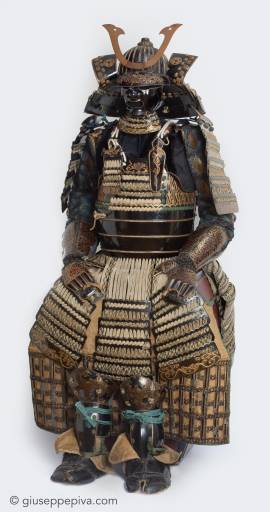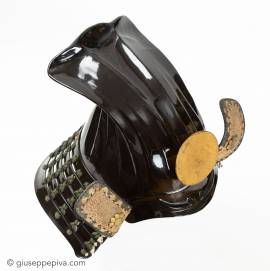Ni-mai do tosei gusokuSecond half of Edo Period (1615-1867)19th CenturyHeight: 86 cmDuring the 17th Century samurai families used to display a set of helmet and armor, weapons and banners outdoors on the Tango-no-Sekku Festival (The Boy’s Festival), held on the fifth day of the fifth month, designated as an important ceremonial day by the Edo Shogunate Government. Later in the Edo period these items, except for the banners, were moved indoor, on rooms facing the street. The style of displaying varied in accordance and the armors gradually became miniaturized, thus keeping splendid...
WORKS FOR SALE
TessenFighting fanMid Edo Period (1615 - 1867), Iron, paper with silver-leaf and bamboo.Menhari-gata (opening fan), sensu-gata (enlongated shape)Lenght: 33 cm. - Width open: 54.5 cm.Iron fan with an elegant shape, with nine bamboo ribs.Customarily carried in the hands or tucked in the obi (belt), the folding fan played a significant role in Japanese etiquette, especially on formal occasions, and was rarely ever out of a samurai's possession. Perhaps because it was considered such an ordinary item, it was easily employed as a suitable side arm with only minor modifications....
Kakukuzin-nari kawari kabutoHelmet shaped as a cloth headgearMid Edo Period (1615-1867) 18th century The kakuzukin, or squared cap, was formed by a rectangular cloth folded and sewn along the sides. The decoration over the iron bowl imitating this headgear is made in harikake, a mixture of papier-maché and lacquer that results light and solid at the same time. The last plate of the neck guard (shikoro) on this helmet is lacquered in gold.Harikake had been used during the Momoyama period (1573-1715) when generals begun to wear large helmets shaped with unusual and extravagant...
Copyright © 2016 - giuseppe piva - VAT: 05104180962










